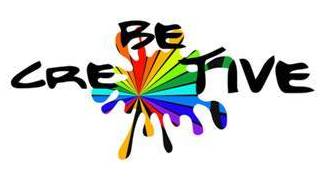Cloaca jam you say? Nope. You see, for the past twenty years music psychologists have known that even infants focus on new music more than music they've heard before (Chang and Trehub, 1977).
The bottom line is, the world doesn't need more than one Taylor Swift, or Justin Timberlake, or even more than one Backstreet Boys or Maroon 5.
Don't get me wrong. Copying how someone else performs, referred to as Modelling, is critical to your learning and skill development. But at some point you'll have to go where no man has gone before. Okay, probably not that far; but you'll definitely have to stop pretending to be someone else.
So what makes music "original" you ask (or at least should be asking at this point)? The answer is, sometimes surprisingly little; and you could do worse than taking a leaf out of the pages of history.
History? Okay, so Napoléon Bonaparte said, "History is a set of lies agreed upon.” And Henry Ford said, "History is more or less bunk. It's tradition - we don't want tradition, we want to live in the present, and the only history that is worth a tinker's dam is the history we made today."
But...
Ludwig van Beethoven (1770-1827). Heard of him? Well even if you haven't, you should be interested because he's a man of your heart: Fiercely independent - the very first ever true Indie Musician.
You see, up until Beethoven, all musicians were owned - sorry, I mean employed, by someone else, usually the church or the aristocracy. Beethoven was the first musician who said, "to hell with that for a joke, I'm doing my own thing!" (or words to that effect). And he did (and that he did so as he was losing his hearing and continued well after he was completely deaf, is simply astounding).
So how can Beethoven's nearly two hundred year old music teach you anything about making your own music sound original? I'll show you.
Beethoven's Symphony No. 9 in D minor, Op. 125, also known as "The Choral." Hang on, you ask, isn't a "symphony" by definition a musical composition for an orchestra, and how come this symphony has a choir part? Like I said before, "fiercely independent" (that's a compositional hint).

So you may not know Beethoven's 9th Symphony, but I'd be surprised if you didn't recognise this tune from the final movement, called Ode to Joy:
For the sake of simplicity I won't use musical notation to represent the tune, but instead use words to crash out the rhythm. If you listen to the music again you'll hear that the rhythm goes like this:
Tah-tah-tah-tah-tah-tah-tah-tah-tah-tah-tah-tah-taaah-ta-ta.
Beethoven repeats the tune time and time again so that sticks in your memory (that's another compositional hint). Then a little later in the movement he creates a completely new tune:
Using words, the rhythm of the new tune goes like this:
ta-taah-ta-taah-ta-taah-ta-taah-ta-taah-ta-taah-ta-taah-ta-taah.
Only it's not a new tune at all, just the first tune with a different rhythm; but it sounds so different it's even picked up its own nickname - The Turkish March.
To be honest, he also changed the key of the music in the new tune (another hint), but research into the psychology of music has shown than changing the key alone isn't enough to make a tune "new" - not even in infants (Chang and Trehub, 1977).
So, there you have it, one simple technique (or perhaps three) you can use to take an existing song and make it original, make it your own.

Oh, and by the way, at the end of the premiere performance of his 9th Symphony Beethoven had to be turned around to be made aware of the thunderous applause from the audience behind him because he couldn't hear it - or the orchestra he had been conducting over the previous hour. He was completely deaf - he could only hear music in his mind.
Blog by Martin Robinson
References: Chang, H. W., and Treehub, S. E. (1977): Auditory processing of relational information by youthful infants. Journal of Experimental Child Psychology, 24, 324-33.

